ATCvet
The ATCvet system for the classification of veterinary medicines is based on the same overall principles as the ATC system for substances used in human medicine. In most cases an ATC code exists which can be used to classify a product in the ATCvet system. The ATCvet code is then created by placing the letter Q in front of the ATC code. In some cases, however, specific ATCvet codes are created, e.g. Antibacterials for intramammary use (QJ51) and Immunologicals (QI).
In both the ATC and the ATCvet systems, preparations are divided into groups, according to their therapeutic use. First, they are divided into 15 anatomical groups (1st level), classified as QA-QV in the ATCvet system, on the basis of their main therapeutic use.
Within most of the 1st level groups, preparations are subdivided into different therapeutic main groups (2nd level), coded for example as QA01, QA02, QA03 etc. Two levels of chemical/therapeutic/pharmacological subgroups (3rd and 4th levels), e.g. QA02A, QA02B etc. at the 3rd level and QA02AA, QA02AB etc at the 4th level, provide further subdivisions. At a 5th level, e.g. QA02AA01, chemical substances are classified. (This subdivision does not apply to QI - Immunologicals.)
This is illustrated by the following examples:
Anatomical groups (1st level):
| ATCvet 1st level |
Name | ATC |
| QA | Alimentary tract and metabolism | A |
| QB | Blood and blood forming organs | B |
| QC | Cardiovascular system | C |
| QD | Dermatologicals | D |
| QG | Genito urinary system and sex hormones | G |
| QH | Systemic hormonal preparations, excl. sex hormones and insulins | H |
| QI | Immunologicals | - |
| QJ | Antiinfectives for systemic use | J |
| QL | Antineoplastic and immunomodulating agents | L |
| QM | Musculo-skeletal system | M |
| QN | Nervous system | N |
| QP | Antiparasitic products, insecticides and repellents | P |
| QR | Respiratory system | R |
| QS | Sensory organs | S |
| QV | Various | V |
2nd level groups - examples from group QJ - Antiinfectives for systemic use
QJ51 Antibacterials for intramammary use
QJ54 Antimycobacterials for intramammary use
3rd level groups - examples from group QJ51 - Antibacterials for intramammary use
QJ51F Macrolides and lincosamides for intramammary use
QJ51G Aminoglycoside antibacterials for intramammary use
QJ51R Combinations of antibacterials for intramammary use
4th level groups - examples from group QJ51R - Combinations of antibacterials for intramammary use
QJ51RF Macrolides, combinations with other antibacterials
QJ51RG Aminoglycoside antibacterials, combinations
QJ51RV Combinations of antibacterials and other drugs
5th level code - example from group QJ51R F - Macrolides, combinations with other antibacterials
QJ51RF01 Spiramycin, combinations with other antibacterials
The complete classification of ampicillin for systemic use illustrates the structure of the ATC code:
| J | General antiinfectives for systemic use (1st level, anatomical main group) |
| 01 | Antibacterials for systemic use (2nd level group, therapeutic main group) |
| C | Beta-lactam antibacterials, penicillins (3rd level group, therapeutic subgroup) |
| A | Penicillins with extended spectrum (4th level group, chemical/therapeutic subgroup) |
| 01 | Ampicillin (5th level code, subgroup for chemical substance) |
Thus, in the ATC system, all plain ampicillin products for systemic use should be classified using the code J01CA01.
In most cases an ATC code exists which can be used to classify a product in the ATCvet system. The ATCvet code is then created by placing the letter Q in front of the ATC code.
An ATCvet classification code is thus built up as follows:
| Example: Ampicillin | ||||||
| Level | 0 | 1 | 2 | 3 | 4 | 5 |
| ATC code | J | 01 | C | A | 01 | |
| ATCvet code | Q | J | 01 | C | A | 01 |
Last updated: 2023-12-21

